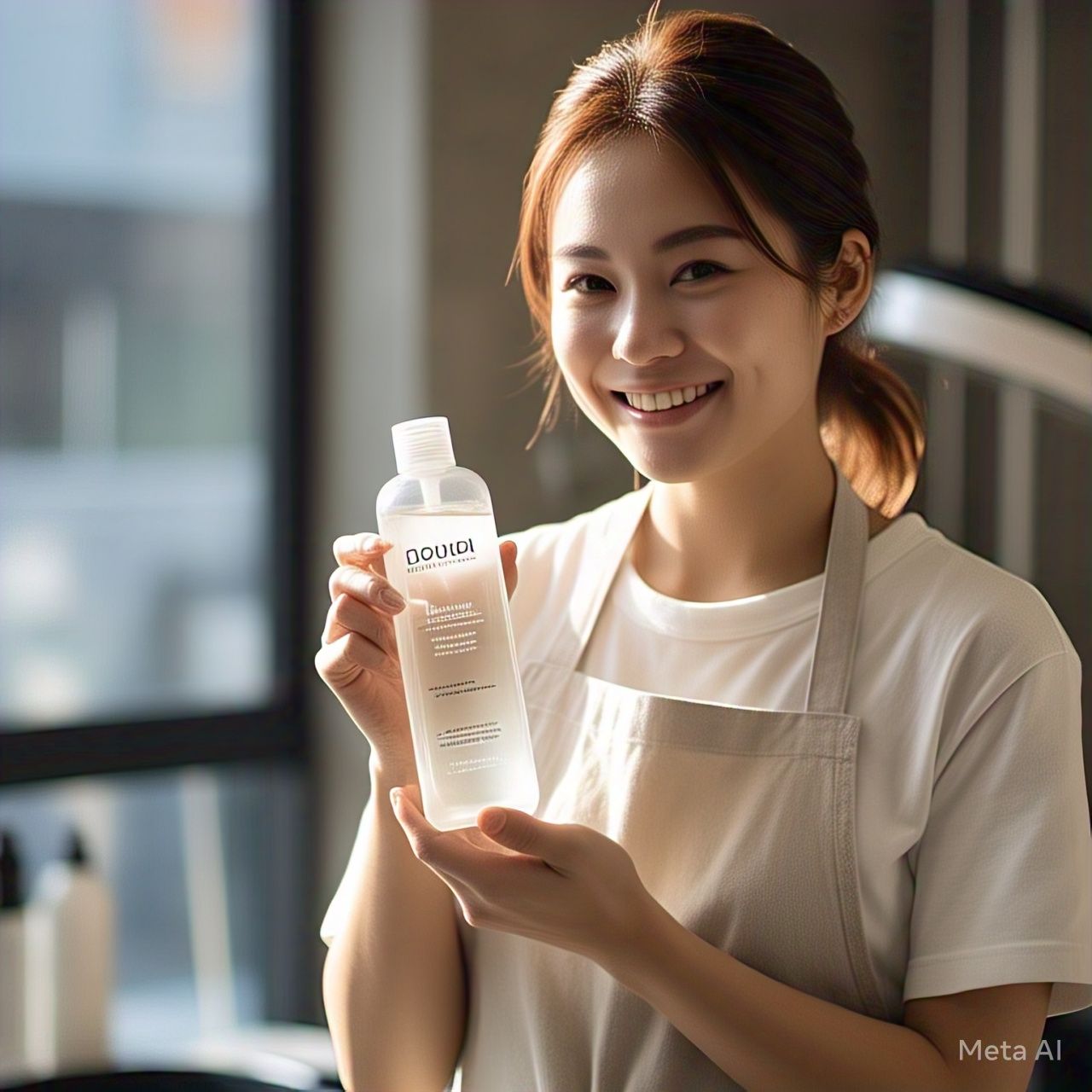Understanding Damaged Hair and the Role of Conditioners
What Causes Damaged Hair?
Damaged hair is a common issue faced by many individuals, and it can result from various factors. Overuse of heat styling tools such as flat irons, curling wands, and blow dryers can strip hair of its natural moisture, leading to dryness and breakage. Chemical treatments, including coloring, bleaching, perming, and relaxing, weaken the hair’s structure by breaking down protein bonds. Environmental stressors like sun exposure, wind, and pollution also contribute to hair damage by causing oxidative stress. Additionally, poor hair care habits, such as rough towel drying, brushing wet hair aggressively, and using harsh shampoos, can further deteriorate hair health.
How Conditioners Help Repair Damaged Hair
Conditioners play a crucial role in restoring damaged hair by replenishing lost moisture, smoothing the hair cuticle, and providing essential nutrients. High-quality conditioners contain ingredients like keratin, argan oil, shea butter, and proteins that penetrate the hair shaft to repair and strengthen weakened strands. They also create a protective barrier around the hair, reducing frizz and preventing further damage. Regular use of a good conditioner can improve elasticity, reduce split ends, and enhance overall hair texture.
Key Ingredients to Look for in a Conditioner
When selecting a conditioner for damaged hair, certain ingredients are more effective than others. Keratin is a protein naturally found in hair, and conditioners containing keratin help rebuild broken bonds. Argan oil and coconut oil are excellent for deep hydration and adding shine. Shea butter provides intense nourishment for dry, brittle hair. Panthenol (provitamin B5) strengthens hair and improves moisture retention. Silicones like dimethicone can temporarily smooth the hair cuticle, but some people prefer silicone-free options to avoid buildup.
How Hairdressers Assess Hair Damage
Professional hairdressers evaluate hair damage by examining texture, elasticity, and porosity. They check for signs like split ends, excessive dryness, and breakage. A simple stretch test—gently pulling a strand to see if it snaps easily—can indicate weakness. Hairdressers also consider the client’s styling habits and previous treatments before recommending the best conditioner. Their expertise ensures that the product chosen targets specific damage types effectively.
Understanding the causes of hair damage and how conditioners work to repair it is the first step toward healthier hair. By recognizing key ingredients and trusting professional assessments, individuals can make informed choices when selecting a conditioner. The next section will explore the best salon-recommended conditioners for different types of damaged hair.
Salon-Recommended Conditioners for Different Hair Types
Best Conditioners for Chemically Treated Hair
Chemically treated hair requires extra care due to the harsh effects of dyes, bleaches, and relaxers. Many hairdressers recommend Olaplex No. 5 Bond Maintenance Conditioner because it repairs broken disulfide bonds, restoring strength and elasticity. Another favorite is Redken Extreme Length Conditioner, which contains biosilk protein to fortify weakened strands. For those seeking a sulfate-free option, Pureology Hydrate Conditioner offers intense moisture with a blend of essential oils.
Top Choices for Heat-Damaged Hair
Frequent heat styling leads to dry, brittle hair that lacks shine. Professionals often suggest Moroccanoil Restorative Conditioner, infused with argan oil to replenish lost moisture and protect against future damage. Briogeo Don’t Despair, Repair! Deep Conditioning Mask is another excellent choice, featuring rosehip oil and B vitamins to revive heat-stressed hair. For daily use, Tresemmé Keratin Smooth Conditioner helps smooth frizz and adds a protective layer against heat.
Conditioners for Extremely Dry and Brittle Hair
Severely dry hair needs deep hydration to restore softness and manageability. SheaMoisture Manuka Honey & Mafura Oil Intensive Hydration Conditioner is highly recommended for its rich, natural ingredients that lock in moisture. Pantene Pro-V Repair and Protect Conditioner is a budget-friendly yet effective option with antioxidants and lipids to repair damage. For a luxurious treatment, Kerastase Nutritive Magistral Conditioner delivers intense nourishment with iris extract and ceramides.
Lightweight Conditioners for Fine, Damaged Hair
Fine hair can easily become weighed down by heavy conditioners. Aveda Damage Remedy Daily Hair Repair is a lightweight option that strengthens without adding bulk. Living Proof Restore Conditioner uses patented healthy hair molecules to repair damage while maintaining volume. Verb Ghost Conditioner is another great pick, offering hydration without residue, making it ideal for thin or oily hair types.
Choosing the right conditioner depends on the type and extent of hair damage. Salon professionals emphasize the importance of selecting products tailored to specific needs—whether it’s chemical damage, heat exposure, extreme dryness, or fine hair. The next section will discuss deep conditioning treatments and how often they should be used for optimal results.
Deep Conditioning Treatments and Application Techniques
Why Deep Conditioning is Essential for Damaged Hair
Deep conditioning treatments go beyond regular conditioners by delivering intense hydration and repair to severely damaged hair. Unlike daily conditioners, which provide surface-level moisture, deep conditioners penetrate the hair shaft to restore strength, elasticity, and shine. Hairdressers often recommend deep conditioning for clients with chemically processed, heat-damaged, or excessively dry hair. These treatments contain higher concentrations of nourishing ingredients like proteins, natural oils, and ceramides, which help rebuild the hair’s internal structure.
For best results, professionals suggest using a deep conditioner once or twice a week, depending on the hair’s condition. Overuse can lead to protein overload, making hair stiff and brittle, while underuse may not provide enough repair. The key is finding a balance that keeps hair healthy without weighing it down.
Best Professional-Grade Deep Conditioners
Salon-quality deep conditioners offer superior repair compared to drugstore options. Olaplex No. 8 Bond Intense Moisture Mask is a favorite among stylists because it combines bond-building technology with deep hydration. Another top choice is Kérastase Résistance Extentioniste Strengthening Treatment, which uses amino acids and ceramides to reinforce weak strands. For those who prefer natural ingredients, Briogeo Don’t Despair, Repair! Deep Conditioning Mask contains algae extract and argan oil to restore moisture and shine.
Budget-conscious consumers can still find effective deep conditioners. L’Oréal Paris Elvive Total Repair 5 Power Restore Multi-Use Treatment is a drugstore gem that repairs five signs of damage—split ends, weakness, roughness, dullness, and dehydration. SheaMoisture Jamaican Black Castor Oil Strengthen & Restore Treatment Masque is another affordable yet potent option, ideal for thick, coarse, or highly damaged hair.
How to Apply Deep Conditioner for Maximum Benefits
Proper application ensures that the treatment works effectively. Hairdressers recommend the following steps:
- Start with Clean, Damp Hair – Shampoo hair to remove buildup, then gently towel-dry to remove excess water. Slightly damp hair allows the conditioner to penetrate better.
- Section Hair for Even Distribution – Divide hair into four sections to ensure every strand is coated, especially for thick or long hair.
- Apply Generously from Mid-Length to Ends – Avoid applying too much product near the scalp to prevent greasiness. Focus on the most damaged areas.
- Use Heat for Better Absorption – Cover hair with a shower cap and apply mild heat (using a blow dryer on low heat or a warm towel) for 10-15 minutes. Heat opens the hair cuticle, allowing deeper penetration.
- Rinse Thoroughly with Cool Water – Cool water seals the cuticle, locking in moisture and enhancing shine.
Common Mistakes When Using Deep Conditioners
Many people unknowingly reduce the effectiveness of deep conditioners by making simple errors. One mistake is leaving the treatment on for too long—overnight treatments are unnecessary and can cause product buildup. Another error is using too much product, which can make hair feel heavy and greasy. Additionally, skipping heat application means the conditioner may not penetrate deeply enough.
Hairdressers also warn against using protein-heavy treatments too frequently. While proteins are essential for repair, overuse can make hair stiff and prone to breakage. Balancing protein treatments with moisture-based masks is crucial for maintaining healthy hair.
Deep conditioning is a vital step in repairing damaged hair, offering intense hydration and strengthening benefits. By selecting the right product and applying it correctly, individuals can significantly improve their hair’s health and appearance. The final section will cover additional tips from hairdressers, including how to maintain repaired hair and prevent future damage.
Maintaining Repaired Hair and Long-Term Care Strategies
How to Preserve Hair Health After Repair
Once damaged hair begins to recover, maintaining its health becomes the top priority. Hairdressers emphasize that consistent care prevents backsliding into dryness, breakage, and dullness. The first rule is to avoid excessive heat styling—when heat tools are necessary, always apply a thermal protectant spray first. Lowering the temperature on flat irons and blow dryers (below 350°F) also reduces damage.
Another key practice is gentle detangling. Instead of yanking a brush through wet hair, which is at its most fragile, experts recommend using a wide-tooth comb or a detangling brush starting from the ends and working upward. Silk or satin pillowcases help minimize friction overnight, reducing split ends and breakage.
The Role of Leave-In Conditioners and Hair Serums
While rinse-out conditioners provide foundational repair, leave-in products offer ongoing protection. Leave-in conditioners, like It’s a 10 Miracle Leave-In, add lightweight moisture and detangling benefits without weighing hair down. Hair oils and serums, such as Moroccanoil Treatment or Olaplex No. 7 Bonding Oil, seal the hair cuticle, lock in hydration, and protect against humidity and UV rays.
Hairdressers suggest applying these products to damp hair after washing, focusing on mid-lengths and ends. A pea-sized amount is usually sufficient—over-application can make hair greasy. For fine hair, spray leave-ins are preferable to creams, as they distribute more evenly.
How Often Should You Wash Damaged Hair?
Overwashing strips natural oils, worsening dryness, while underwashing leads to buildup that weakens strands. The ideal frequency depends on hair type:
- Curly or thick hair often benefits from washing 1-2 times per week.
- Straight or fine hair may need washing every 2-3 days.
- Chemically treated or highly porous hair should use sulfate-free shampoos to prevent further drying.
Dry shampoo can extend time between washes, but excessive use may clog follicles. A clarifying shampoo once a month removes residue without daily harshness.
Professional Treatments vs. At-Home Care
While high-quality conditioners and masks make a difference, salon treatments provide deeper restoration. Keratin treatments temporarily smooth and strengthen hair, while bond-building services (like Olaplex Standalone Treatments) repair disulfide bonds broken by bleach or heat.
However, not everyone needs professional interventions. For moderate damage, a disciplined at-home routine with the right products can restore hair effectively. Hairdressers recommend monthly trims to prevent split ends from traveling up the hair shaft, undoing progress.
Final Recommendations from Top Hairdressers
After consulting leading stylists, the consensus for the best conditioner approach includes:
- For immediate repair: Use a bond-repairing conditioner like Olaplex No. 5 or Kérastase Résistance.
- For ongoing maintenance: Alternate between a moisturizing conditioner (e.g., Pureology Hydrate) and a protein treatment (e.g., Redken Extreme).
- For prevention: Always use heat protectants, minimize chemical processing, and sleep on silk pillowcases.
Conclusion
Repairing damaged hair requires patience and the right products, but the results are worth the effort. By understanding the causes of damage, choosing targeted conditioners, deep treating regularly, and adopting protective habits, anyone can restore their hair’s strength and shine. The journey to healthy hair isn’t about quick fixes—it’s about consistent, informed care.










